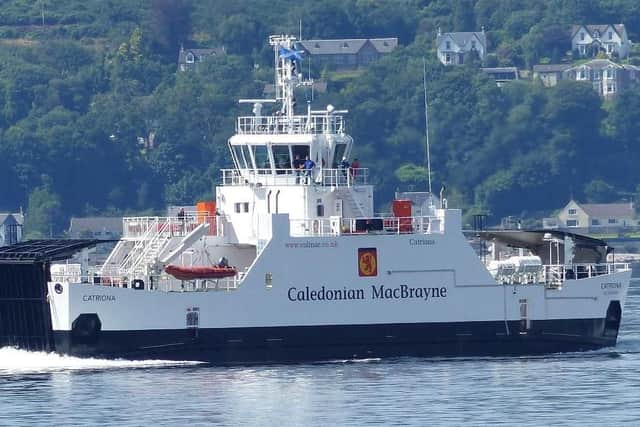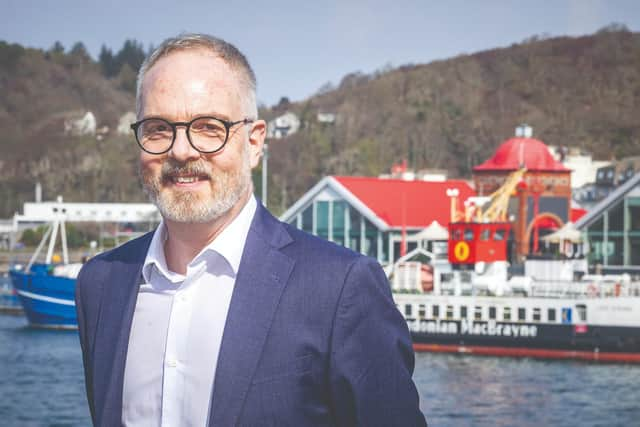CalMac: How Scotland’s ferries will be rigged and ready to sail into a green future, whatever the direction of travel
2023 was reported as the hottest year on re cord and, while storms roll in with alarming frequency, we could be forgiven for feeling deflated in our mission to address the climate emergency.
As a major transport provider, CalMac’s role in supporting global and local net zero ambitions has never been more important. To support the Scottish Government’s commitment to reaching net zero by 2045, we must join individuals, communities and businesses in tackling the climate emergency.
Advertisement
Hide AdAdvertisement
Hide AdAnd, with the Scottish Government consulting on its proposed Scottish National Adaptation Plan (2024-2029), we are poised to support a just transition, drawing on expertise across fleet management, customer insight and maritime data.
We are the UK’s largest ferry company, delivering lifeline services in the challenging waters off the west coast of Scotland. Running more than 500 sailings daily and carrying over five million passengers each year, we play an important role in protecting this unique and diverse environment.
High on our list of strategic priorities is supporting the Scottish Government’s commitment to achieving net zero by 2045. We must bring environmental sustainability into everything we do – from port to port and vessel to vessel.
Greener vessels will reduce our environmental impact as we connect Scotland’s island communities, and we will welcome six major and 10 small vessels into our network over the next five years. They will be more sustainable and efficient than our current fleet.


Two new large vessels, MVs Glen Sannox and Glen Rosa, use liquefied natural gas (LNG), reducing harmful emissions. We’re working with Caledonian Maritime Assets, responsible for building and procuring our vessels, to ensure infrastructure is in place to make LNG available when these vessels come into service.
The four new Islay and Little Minch vessels represent a significant advancement in our commitment to sustainability, using marine gas oil (MGO) and diesel-electrical propulsion, having optimised hull designs engineered for lower emissions and capability to be retrofitted with alternative fuels.
Early data indicates the Islay and Little Minch vessels will lead to a 31 per cent reduction in carbon dioxide emissions and a 28 per cent reduction in daily energy requirements, compared to one of the large vessels in our current fleet, MV Finlaggan. Replacing MV Finlaggan alone will equate to taking 2,200 cars off the road.
The implementation of shore power at Port Ellen, Port Askaig and Kennacraig will improve local air quality and minimise noise pollution.


Advertisement
Hide AdAdvertisement
Hide AdOur first seven new smaller vessels will take zero-emission travel from concept to reality, with the ability to operate solely on battery power during daytime operations. Overnight recharging will be facilitated through strategically located shore charging stations at ports such as Colintraive, Raasay and Fionnphort. This is more than an operational upgrade; it’s a tangible step towards a cleaner, greener maritime future.
What will be the fuel of the future? MGO, LNG, methanol ammonia, hydrogen, biofuels, battery cells, retractable wind foils or even nuclear? The industry is at a crossroads and no fuel type offers the complete solution.
Most of our routes are capable of going fully electric, using batteries, if fast-charging facilities are available. This requires significant upgrades to the grid and is unlikely to happen within the next 10 years. Ports may require battery towers to charge vessels, which is a major funding barrier, and we’re competing with charging capability for the influx of electric vehicles.
Technology advances will also play their part. Automation and artificial intelligence will deliver improved loading efficiency and a smoother customer experience – this will also require port electrical power and strong networks.
That said, Scotland has an excess of green energy and the opportunity and motivation to create a circular green energy economy.
Change is accelerating, and we must embrace it. The ferry services we deliver in the future may be completely different to what we expect, and we must be ready to adapt.
We will not idly drift into the future – we will respond to the changing world around us, for our people and our communities.
Comments
Want to join the conversation? Please or to comment on this article.